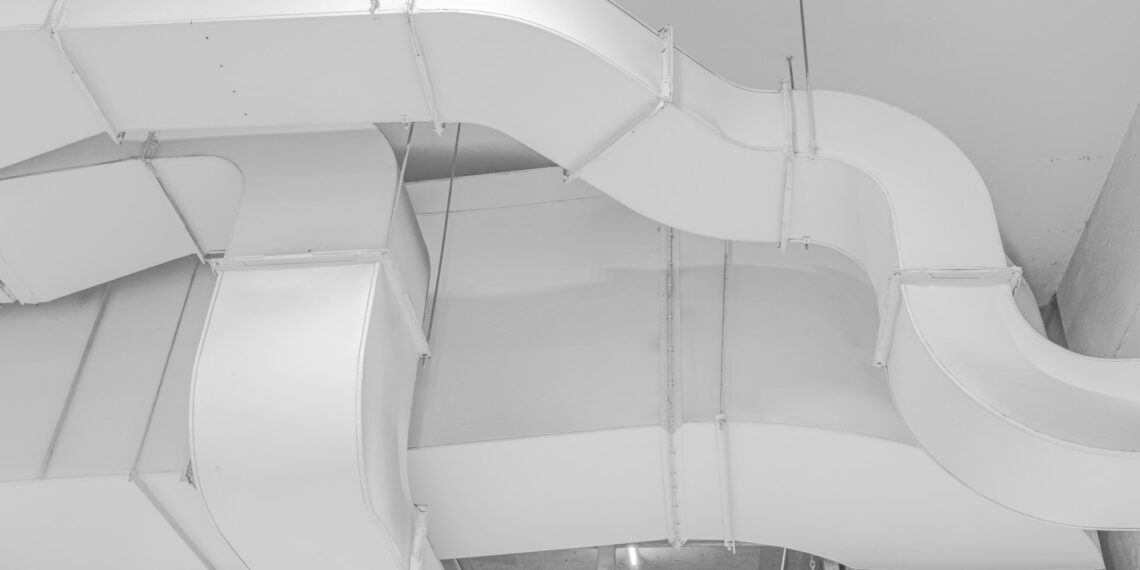How much you’ll pay for a complete ductwork replacement depends on a variety of factors, the contractor you hire and the amount of DIY work you put in. So what’s the true cost of replacing HVAC ductwork?
The Cost Breakdown of Replacing HVAC Ductwork
In the U.S., the typical cost for a full HVAC ductwork replacement ranges from $1,400-$8,000 for flexible ducts and $2,900-$8,000 for sheet metal ducts. If you include outliers, it ranges from a few hundred dollars to well over $10,000. However, you should expect a price tag of about $4,700.
How much does air ductwork cost per foot? Based on the national average, it comes out to about $1,400-$3,200 for 1,000-1,500 square feet and $4,000-$8,000 for 3,500-4,000 square feet. Most contractors will charge more per foot for larger projects, which is why the price varies. There are actually a few factors that might influence the total cost you should be aware of.
Cost Factors Influencing the Replacement Price
Four main cost factors come with replacing HVAC ductwork.
Ductwork Location
The cost to replace HVAC ductwork varies depending on whether it’s in the basement, crawl space, attic or walls — the tougher it is to reach, the more contractors will charge. Location can add anywhere from a few hundred dollars to a few thousand onto the bill.
Duct Material

You can calculate a more accurate per linear foot if you know which material you’ll use. Your options are fiberglass, flexible polyester, galvanized steel or flexible aluminum. Steel used to be popular for its longevity and strength, but most HVAC technicians consider it outdated now.
Flexible aluminum is typically the cheapest ductwork material you can get. Don’t think that means it’s shoddy — it is one of the most common alternatives to galvanized steel because it’s durable, lightweight and easy to work with.
Your Home’s Size
Your home’s size influences how much replacement costs. The more linear feet of ductwork you have, the higher your bill will be. You might see additional charges for installing new vents, registers or insulation if you have many rooms.
Labor Expenses
Labor is one of the most significant cost factors to consider when replacing HVAC ductwork. While it ranges from about $17.50-$32 per linear foot, your location influences the price — you’ll probably pay less if you live in an urban area with a lot of competition among HVAC contractors.
Be mindful that contractors might charge more for things that make their work more challenging. For example, they might ask for more if they have to cut into drywall. If you use a professional, ask them about possible fees like these.
Can You Replace Ductwork Yourself?
While you can technically replace HVAC ductwork yourself, it’s easier to do with multiple people. How do you know when to call a professional? It probably isn’t for you if you don’t like being crammed into small spaces, stuck at heights or cut by sharp duct edges.
You should consider hiring a professional when replacing HVAC ductwork if you don’t know where to begin. You’ll save money in the long run when your HVAC system runs as efficiently as possible.
There’s still an opportunity to DIY your ductwork to get your hands dirty and save some money. Since many contractors charge extra fees to remove the existing ducts, you’ll spend less by figuring out how to remove HVAC ductwork.
How to Remove Ductwork on Your Own
You can save on labor — and removal fees — if you learn how to remove HVAC ductwork yourself.
Turn the HVAC System Off
Turn the HVAC system off before beginning — you don’t want it on when you’re in the middle of tearing it apart. Remember to disconnect the power supply so there’s no chance it accidentally activates.
Grab Tools and Access the Ductwork
Grab a flashlight, screwdriver, pliers, hex wrench, work gloves, dust mask and safety goggles so you don’t have to make more than one trip. Trace your ductwork to the farthest point from the central until and begin there.
Loosen and Remove the Fasteners
You need to loosen the fasteners holding duct sections in place. S cleats and drive cleats — connective fittings hammered into place — are the most common. They are the long folds in between duct sections. Use your screwdriver and plier to pry them up and pull them off.
You’ll probably also have screws. While most sheet metal screws require a Phillips head screwdriver, some might be hex socket head types — which require a hex wrench. If you try to pull a duct section off and it won’t budge, look for hidden screws.
Dispose of the Ductwork
Remove duct sections gradually so you don’t have to make multiple trips. When you’ve cleaned up the area, you can dispose of your old ductwork by taking it to a recycling facility or selling it to a scrap metal company.
What You Need to Know About Replacing HVAC Ductwork
The cost to replace HVAC ductwork doesn’t have to be high. Consider choosing flexible aluminum ducts, removing your existing ducts yourself and getting quotes from multiple contractors. A combination of DIY and prep work can help you stay on the lower end of the typical price range.









